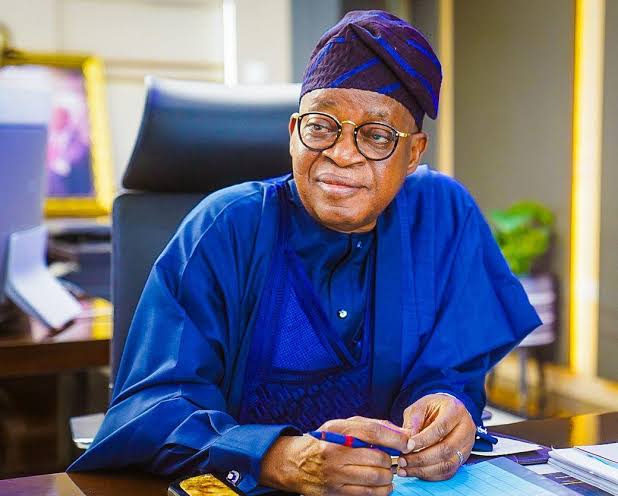Honourable Minister of Marine and Blue Economy, His Excellency Adegboyega Oyetola, CON (left), presenting a plaque to Brigadier General Abdulrahaman Idris, Directing Staff of the National Institute of Policy and Strategic Studies (NIPSS) and head of delegation when members of Study Group 4, Senior Executive Course 47 of NIPSS visited the Federal Ministry of Marine and Blue Economy, Abuja, on a study tour on Wednesday.
Nigeria’s Honourable Minister of Marine and Blue Economy, His Excellency Adegboyega Isiaka Oyetola, has revealed the fierce behind-the-scenes battles that led to the eventual clearing of the infamous Apapa gridlock.
The gridlock was a debilitating crisis that for so long, crippled port operations and economic activities for over two decades.
Speaking on Wednesday when he addressed members of Study Group 4, Senior Executive Course 47 of the National Institute of Policy and Strategic Studies (NIPSS), who were on a study tour of the Ministry, Oyetola recounted the long and difficult journey to restoring order to Nigeria’s most important maritime corridor, stating that the victory did not come easily.
The Minister said he had to confront and dismantle entrenched interests and well organised syndicates who had, for years, fed fat on the chaos surrounding the ports and their access roads.
“The Apapa gridlock wasn’t natural — it was engineered. There were people who built careers and empires on the dysfunction of that corridor. Breaking that cycle meant taking on forces who didn’t want change,” the Honourable Minister said.
Oyetola explained that shortly after assuming office in 2023, it became clear to him that the Apapa gridlock had to be tackled head-on if Nigeria’s blue economy was to thrive. But beyond administrative inefficiencies and infrastructural collapse, what he encountered was a system hijacked by vested interests













